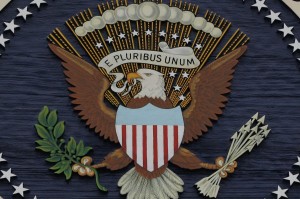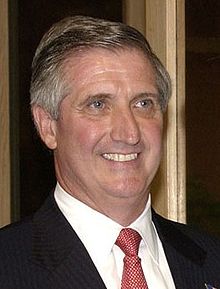 The information a president receives and when they receive it is one of the most important functions that occurs in the White House. Timeliness, accuracy and insight are critical so a president can make any number of informed and important decisions. But of all the items that cross a president’s desk, nothing has more importance or legendary aura surrounding it than the President’s Daily Briefing (PDB).
The information a president receives and when they receive it is one of the most important functions that occurs in the White House. Timeliness, accuracy and insight are critical so a president can make any number of informed and important decisions. But of all the items that cross a president’s desk, nothing has more importance or legendary aura surrounding it than the President’s Daily Briefing (PDB).
Compiled and delivered by a senior member of the intelligence community, this incredibly sensitive briefing covers what is happening around the world that could impact American lives, commerce and national security. It’s not a one-size fits all document either. Each president’s PDB is specifically tailored to each president’s interests and briefing preferences (e.g. use of maps, imagery, dossiers, etc.).
While I’ve never been privy to any such document (except for those declassified excerpts printed in news stories, or the fictionalized ones described in the Tom Clancy books), I can imagine that each PDB is a pretty sobering read. There are any number of dominoes that could fall any direction that could cause tremendous security implications for a president to keep in mind of as they go about their day. Despite the countless numbers of hours and “homework” done by the intelligence teams to assemble each PDB, there are and always will be factors and circumstances that a president and their national security team will not know about or have full insight into. But that might be about to change.
 I recently had a chance to hear former White House Chief of Staff Andrew Card speak. Besides having the distinction of being one of the longest serving chiefs of staff (for George W. Bush, November 2000—April 2006), Card served three different presidents (Reagan, Bush 41, and Bush 43) in top positions in each White House. It’s safe to say he’s been there on the best of days and most certainly the absolute worst. As such, he has a more-than-adequate understanding of the information to which a president has access to make a decision.
I recently had a chance to hear former White House Chief of Staff Andrew Card speak. Besides having the distinction of being one of the longest serving chiefs of staff (for George W. Bush, November 2000—April 2006), Card served three different presidents (Reagan, Bush 41, and Bush 43) in top positions in each White House. It’s safe to say he’s been there on the best of days and most certainly the absolute worst. As such, he has a more-than-adequate understanding of the information to which a president has access to make a decision.
Knowing he had seen PDBs from the 1980s, 1990s and the 2000s, he had no doubt seen a gradual evolution of the tools, information and presentation style that America’s intelligence community would use to inform the Commander in Chief. With that background in mind, it spurred me to ask him a question: “How will data and analytics change the PDB?”
Given that he was addressing a program where data and analytics were the focus of the meeting’s proceedings, plus the fact he “had done his homework” and knew what data and analytics were, Card said without hesitation, “They offer context and effect that they’ve not had before.”
Card went on to describe how those tools can help a president and his team better understand the “what if?” scenarios that threats present and how those risks could be mitigated and addressed. He explained that context brings with it a bigger understanding of the where and why of the rising threat; who may be impacted; what the costs are; and how those risks and threats might be assessed and considered.
While effect also details costs and impacts, it also allows a decision maker to get a sharper look of the ripple effect and consequences of what might occur if the threat and risk should become a reality. In short, Card described a snapshot of the prospective future offered from multiple and informed angles to support data-driven decision-making.
While the components that make up a PDB (e.g., culled intelligence reviewed by seasoned and qualified analysts) may remain steadfast, having tools like data and analytics present the president with a clearer and fuller aperture perspective of the impact that their decision(s) will render.
As data and analytics improve and mature by increased usage, they offer less guessing and more informed insight into what are truly life and death presidential decisions. As quickly as intelligence experts and analysts work to give the president and national security leaders their insights on what is happening around the world, data and analytics can bring an even more instant set of insights to how actions can impact lives, infrastructures, markets and more. That essentially makes the PDB capable of being a sentient GPS dashboard for the free world, rather than just an update of what is happening in the world at that moment in time.
As powerful as a briefing like that might be for a president sitting in the Oval Office, the same type of data and analytic decision enhancing capabilities (offering greater context and effect) would also be a tremendous assets to a governor, a mayor or an emergency manager deciding their next steps for an imminent or unfolding emergency; for a utility or infrastructure owner/operator trying to maintain their operations in changing conditions; or for an intelligence or homeland security component (e.g., ICE, local law enforcement, fire/EMS, etc.) that have to deploy personnel and assets into hazardous and often dynamic conditions.
Critical life and death decisions don’t just reside at the Oval Office. They reside in every zip code. More informed decisions shaped by better understood implications can help those decision makers, from the president on down. While Card described the changes data and analytics might bring to the PDB and presidential decision making, he described similar benefits that federal, state and local policymakers might derive if they choose to employ the same data and analytic tools to their policymaking work.
By defining how people will be impacted by a policy, what principles the policy will effect, and the partners who will be affected and can help make the policy a reality, a larger awareness and understanding can be brought to the policymaking table. By doing that, Card saw that the “consequence of policy is more important than the policy itself.”
That’s not a bad set of tools to employ when lives, dollars and security are at stake. And it sounds like a great opportunity to make better decisions too.
Want to know more about the PDB? Here are two great books worth your time:

